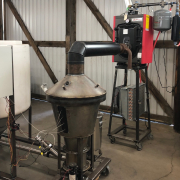Ag solutions company sparks biomass innovation and remarkable success
The fertile farm country of eastern Washington’s Palouse prairie region hosts millions of acres of grains, fruits, vegetables, forage, and forests that support its economy. And one Cheney-based company is increasing the economic value of these crops by turning their organic waste into a valuable soil amendment called biochar.
Mike Werner, CEO of Qualterra, a Washington-based agricultural technology solutions firm focused on sustainability, says his company’s mission is to deliver innovative solutions to farmers. One of Qualterra’s flagship technologies is a biomass processing technology that produces biochar, a charcoal-like material made from organic materials that are processed through Qualterra’s Biomass Processing Units (BPU) at high temperatures in a low combustion environment that locks in and sequesters carbon to form biochar. When added to soils, biochar can improve key factors like pH, aeration, drainage, nutrient availability, microbial makeup, and water absorption.
Werner says Qualterra is trying to strike a balance between the viability of food systems and the economics of what farmers need. “By adding in biochar, we’ve seen some very positive outcomes for our growers,” he said. “At the end of the day, it helps their crops grow better while improving their soil for the next generation. This is an important aspect of food security.”
The Qualterra brand is only a couple of years old, but the history of their technologies spans the last decade. They spawned out of two different companies that did biomass processing, plant propagation, and molecular diagnostic testing. The two companies had a distinct overlap with soil improvement goals, which fostered a circular economy around “better plants, better soils, better world.”
Thriving in drought
Qualterra’s 75-acre farm in Cheney, Washington, just outside Spokane, is the main campus for biomass processing and commercial biochar production. It is also home to a laboratory, greenhouse, and Agricultural Regeneration Center (ARC) on over 50 acres of farmland used to conduct research.
“We’ve successfully processed wheat straw, nut shells, hops, thistle, and rice husks to make high quality and consistent biochars through pyrolysis within our BPUs,” said Werner. “But we know one size doesn’t fit all, so we are constantly pushing our boundaries, asking questions, and researching: What’s the right biomass? How much to use? What are the right soils? Where’s the benefit?”
One real-world success came when Qualterra partnered with a local farm and applied biochar in the soil with new start apple trees. “Within a month, the grower called us back and said, ‘I think there’s a difference–you gotta come out and see it,’” Werner said. “After 3 months, we kept seeing bigger, denser, and greener trees. Trees planted in biochar-amended soils within five months had a canopy 20-25% greater than the rest of the orchard, even in the hottest part of the year.”
Qualterra’s biochar product has succeeded with plants during climate stress and drought. The biochar improves soil water absorption and holding capacity, allowing growers to reduce watering in controlled environments by about 25%.
“We can work very closely with growers based on our team’s scientific experiences to support the evidence-based application of biochar in different cropping systems,” Werner said. “Summers are getting hotter, and water restrictions are a reality. Biochar can help soils function more effectively during those stressful times.”
Qualterra’s ARC facility, located in Cheney, Washington, was intentionally chosen as a demonstration facility for agricultural sustainability and housing its technologies in one location. The biomass processing units produce biochar that customers can purchase. Qualterra is also continuing its research and can scientifically test the agricultural benefits of its biochar at its on-site R&D greenhouse.
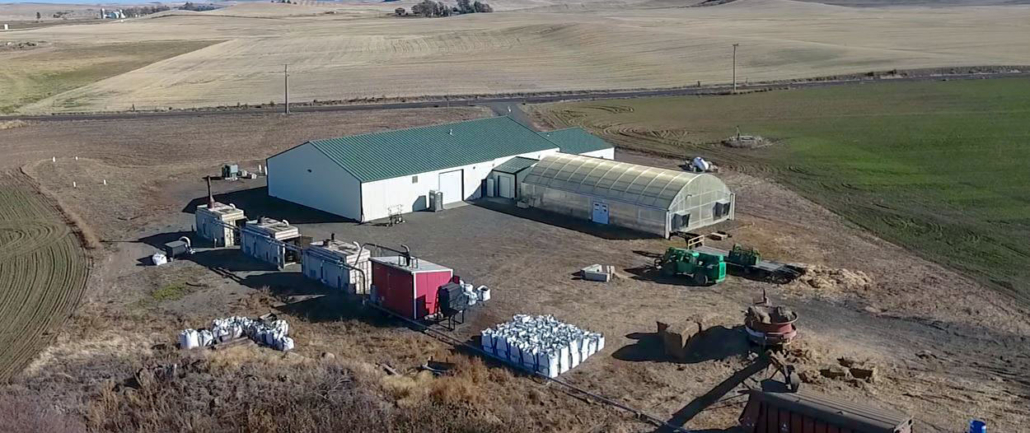
Added energy benefit
Qualterra has just begun harnessing the green renewable energy from the units to offset its energy footprint. Its life cycle analysis of its biomass processing units showed that after running for just 1.36 months, the technology was carbon-negative. The units have been running on site for 10-15,000 hours and can process 450 tons of biomass a year without even running at full capacity. They run on 3-5 kWh but produce 80-90 kWh of renewable energy, producing a net surplus.
In Werner’s estimation, “the value proposition of responsible elimination of waste, biomass processing, biochar production, and renewable energy capture is compelling and important. That’s the last big piece for our organization and our team.”
What’s next
Qualterra conducts biochar studies with 27 research partners, testing various applications in 13 different cropping systems across three states. It is also exploring applications for decarbonizing industries and helping them reduce their carbon footprint.
There is also a need to expand federally funded research to close critical knowledge gaps on biochar. The Senate version of the 2025 USDA appropriations bill includes $2.5 million in new funding for biochar research. The research would inform farmers, ranchers, foresters and businesses on which type of biochar will have positive results in their area. It would help companies like Qualterra do even more to maximize the many benefits of biochar.
Werner says young people are interested in the environmental impacts of biochar. Local schools bring kids out to tour Qualterra’s facilities because they want to understand biochar and sustainability in agriculture systems. “We are trying to build a company,” he said, “but also build a knowledge base for future generations.”

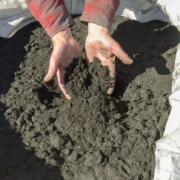
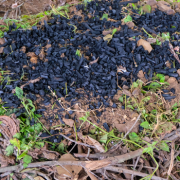
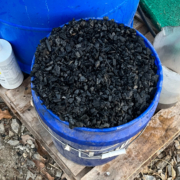
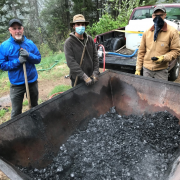 Courtesy
Courtesy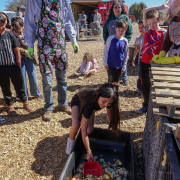 Courtesy Carol Ann Fugali
Courtesy Carol Ann Fugali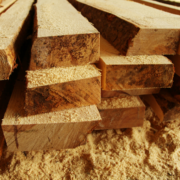
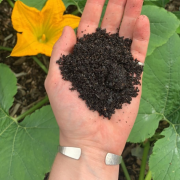 Courtesy Soil Cycle
Courtesy Soil Cycle